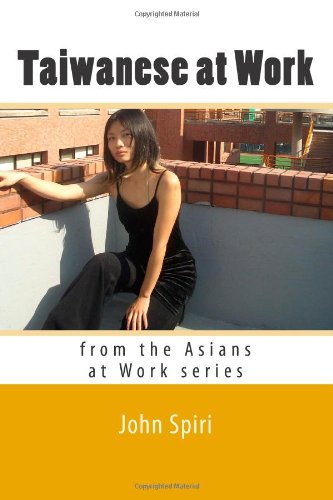
Taiwanese at Work is part of the “Asians at Work” series written by John Spiri. Inspired by Studs Terkel’s oral history Working: People Talk about What They Do All Day and How They Feel About What They Do Spiri traveled all over Asia interviewing people about their typical day of work. This volume on Taiwan, one of five books covering Asian countries, includes interviews with 45 individuals who work in jobs as diverse as politician, slaughterhouse owner, well digger, poem reader, activist, and convenience store clerk. Included is a special section of interviews with Native Taiwanese tribe members in Taitung and Lidao, featuring, among others, an aboriginal dance teacher, a weaver, a village chief and an ex-fisherman turned minister.
The following excerpt is an interview with Hiao Sin Fun, a 48-year-old Gravedigger living in Yunlin County, near Taichung.
John Spiri: What does a gravedigger do?
Jiao Sin Fun: The dead person’s family members come here and consult with a feng shui master to decide where to place the body. That’s the first step. After the body is buried more than ten years, I have to open the coffin, get the bones, and take them out of the ground. I gather and arrange the bones. A family’s fortune and wealth depends on this being done correctly.
Then what happens to the bones?
They are put in a jar. Nothing else is left. The bodies are not cremated; they just decompose naturally. The bones stay forever–but families just pay once.
How long does it take to collect the bones and put them in the jar?
Only one or one and a half hours. It’s troublesome to fit them in the jar. We put the bones under the sunlight; then we clean the remaining bits of meat off the bones. The bones are set up in a certain order, from the fingers to the toes. They stay under the sun for three days in order to totally dry out. The bones are then bound together with red string; the finger bones go in a small red bag. The remaining bones are arranged in a compact form, as if the person were sitting with knees up to chest. The backbone has 24 pieces so that has to be constructed.
That only takes 60 to 90 minutes?
No, just digging them up takes that long. This entire process takes three days. We put coals in with the bones to prevent humidity. At the initial burial, we use a silk cloth to hide the face. Also, the face is painted: eyes and nose are painted black, and the lips red. The clothes, however, are never red. Families believe that red clothes will make the dead person become a ghost. We put a wig of long hair on males, a ponytail, just like in the Ching Dynasty. For females we use a hairpin to keep the hair back so they look like a boy. If we don’t do that bad luck will be brought on the family.
When you first open the coffin after ten years, how do you feel?
Sometimes we find a body that hasn’t decomposed properly and stinks terribly. In that case we put in some water and cabbage. Then we put the coffin top back partially on, but with four bricks to allow air in.
Why water and cabbage?
To increase the moisture so worms will come to eat the body. Then it takes one more year to fully decompose the body
Do you believe in ghosts?
I’ve never met a ghost.
Taiwanese at Work can be purchased from Amazon or, in Japan, directly from the author: globalstoriespress (at) gmail (dot) com
Read an excerpt from Japanese at Work.
